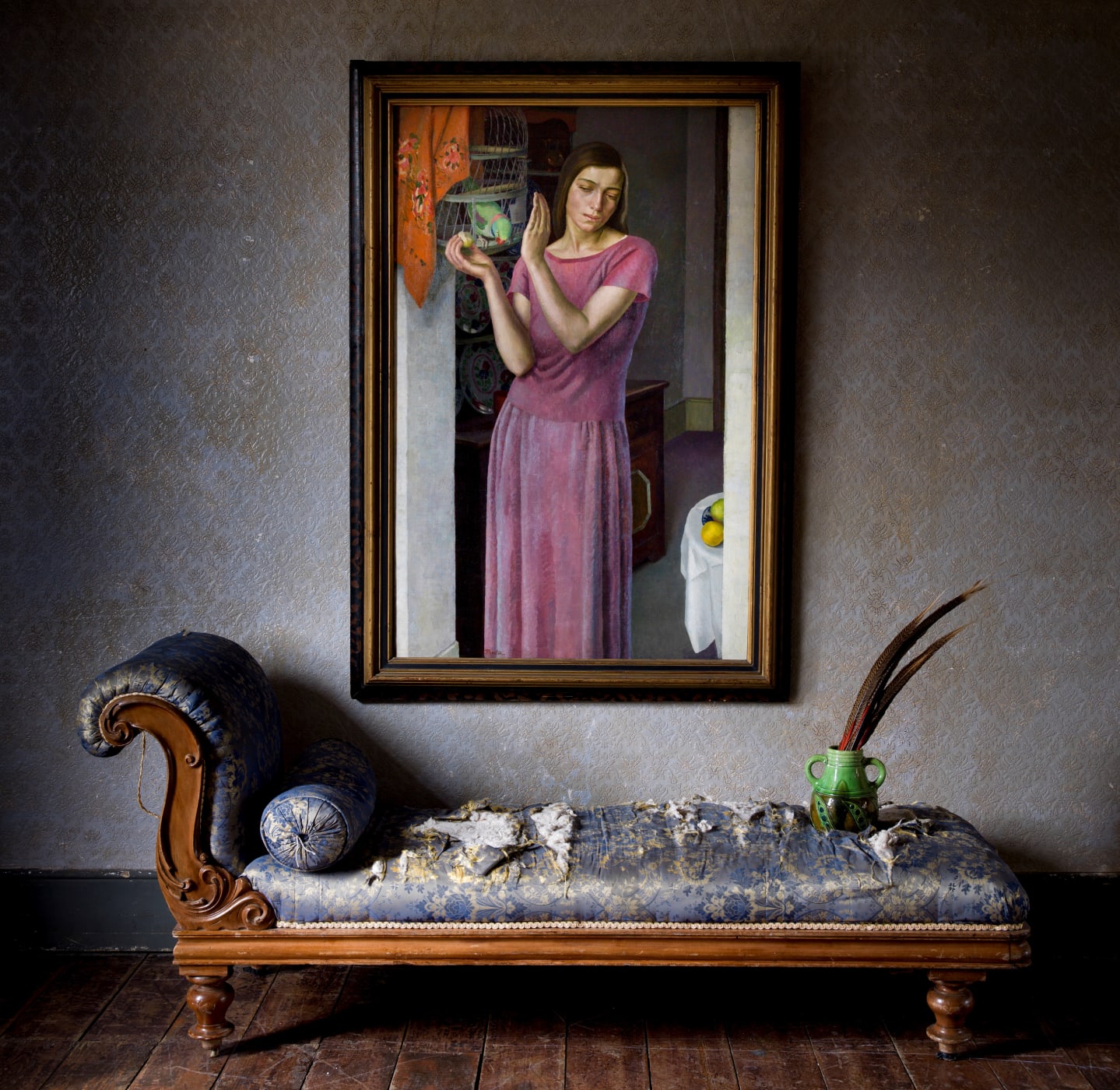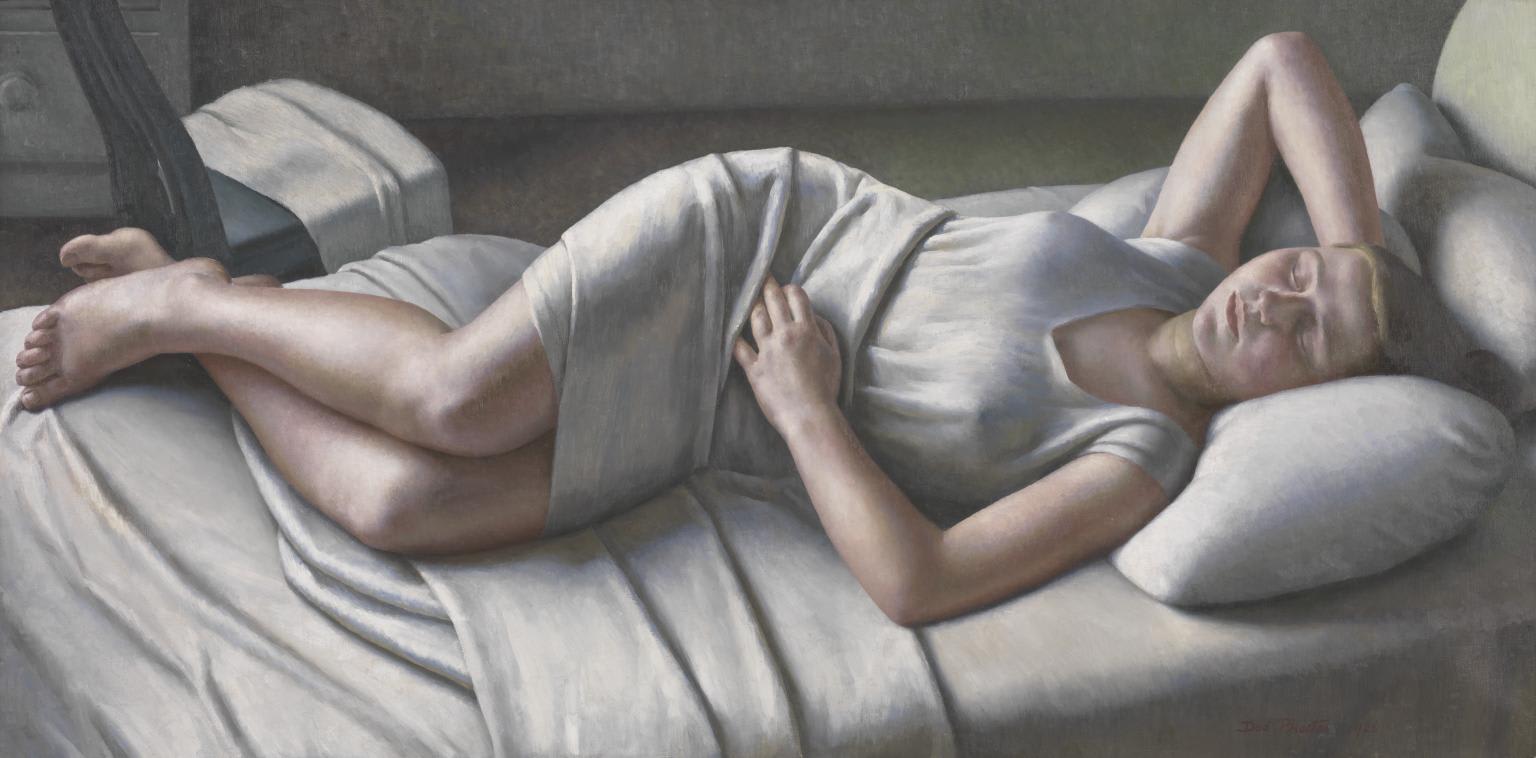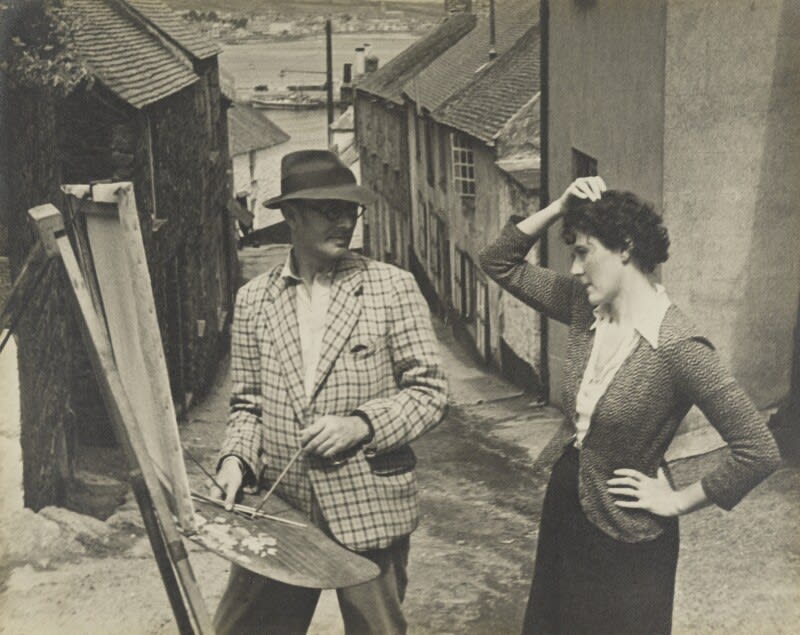Artist in Focus | March 2022
Dod Procter
Dod Procter (née Shaw) was one of the most prominent British female artists of the early-to-mid twentieth century. She was a member of the Newlyn School in Cornwall and is best known for her monumental portraits of female figures on the cusp of adulthood, such as Girl with a Parrot [fig. 1] and her infamous work Morning [fig. 2]. The latter was exhibited at the Royal Academy and awarded 'Picture of the Year' in 1927 and now hangs in Tate Modern, London. Procter was also a pioneer of the still-life genre and exhibited around sixty-five examples at the Royal Academy throughout her career.
Following the death of her husband, Procter's mother decided to relocate the family to Cornwall, settling in the fishing town Newlyn. It was there that Procter enrolled in the Stanhope Forbes School of Painting where she met fellow student Ernest, whom she married in 1912 [fig. 3]. Both artists became key members of the Newlyn School and were together commissioned by a Chinese merchant Lim Ching in Tsong, who was residing at a Newlyn hotel, to paint a series of murals for his palace in Rangoon, Burma. Accepting the offer, the Procters travelled to Burma on Christmas Eve 1919 and had the opportunity to explore the Irrawaddy River by boat. This year away significantly influenced Procter's work. Working almost exclusively on portraiture she became much more confident in her painterly abilities.
On their return to Newlyn, Procter continued to paint portraits and during the 1920s produced some of her best work. It was her highly idiosyncratic style coupled with her nuanced understanding of colour that caught the attention of the critics. She painted her female subjects with great delicacy and sincerity, and it was often remarked that the rounded smoothness of their features was more reminiscent of carved stone rather than painted canvas.
Ernest died unexpectedly of a heart attack in 1935 whilst travelling in the Northeast of England and Procter was devastated - the pair had not only enjoyed a close relationship but also a professional one as they often completed commissions and exhibited together. In the years after her husband's death, Procter travelled to America, Canada, the Canary Islands, Tenerife and Jamaica. During her sojourns, she explored a new style of working that was more pointillist in technique. She began to experiment with surface and texture and further explored the still-life genre with great success, as shown in Still Life of Flowers [Fig. 4].
Procter travelled frequently throughout her life following Ernest's death, but Newlyn always remained her home. She died in 1972 after a long and successful career and was buried next to Ernest in St. Hilary Churchyard, the interior of which they both helped decorate some fifty years earlier.
Works by Procter are housed in public collections throughout the UK, including the Tate and Penlee House Gallery and Museum.






